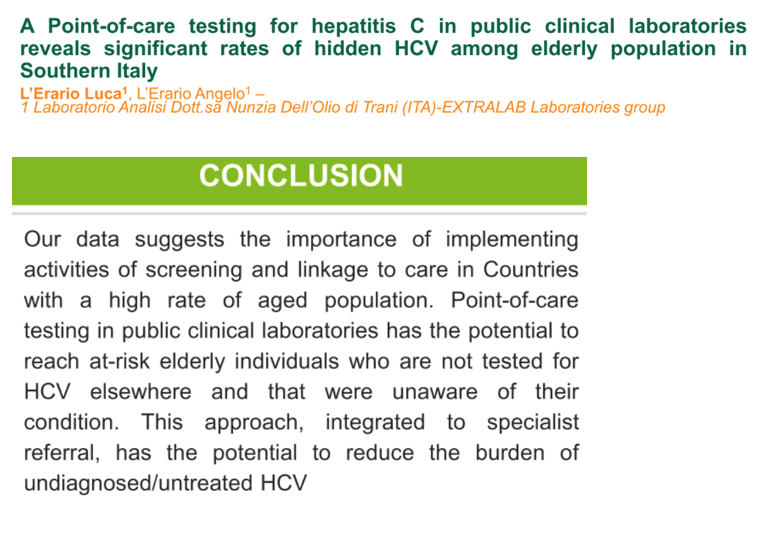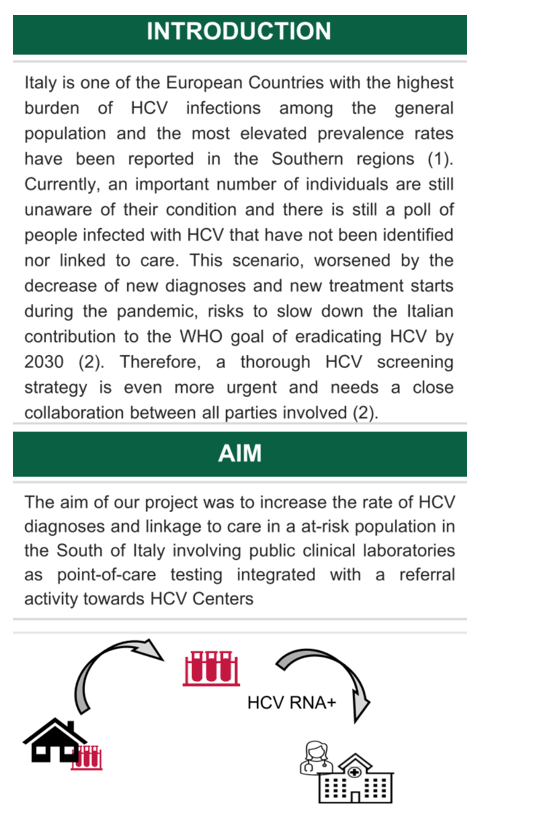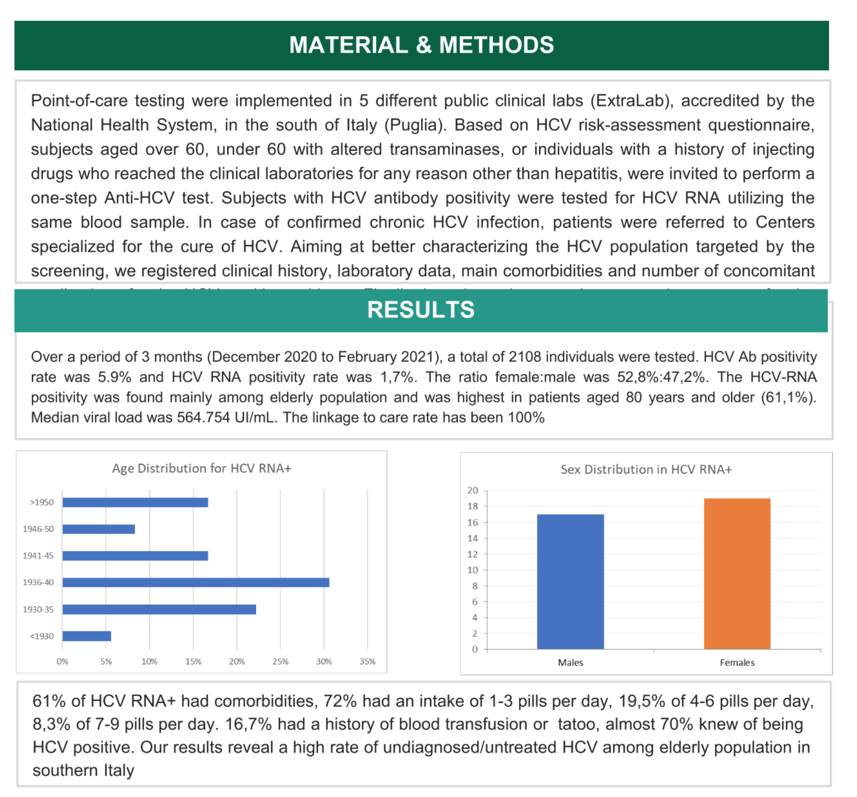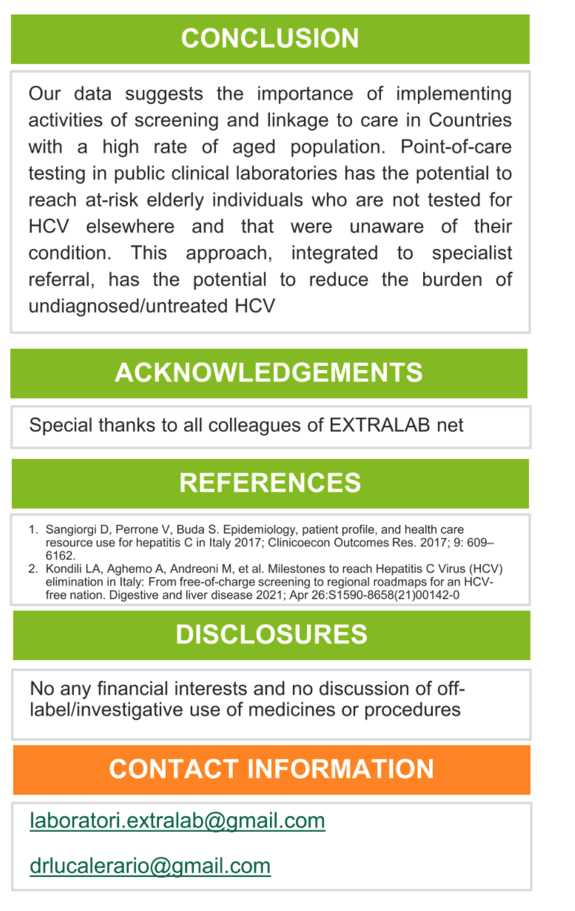 |
 |
 |
| |
POINT-OF-CARE TESTING FOR HEPATITIS C IN PUBLIC CLINICAL LABORATORIES REVEALS SIGNIFICANT RATES OF
HIDDEN HCV AMONG ELDERLY POPULATION IN SOUTHERN ITALY
|
| |
| |

AASLD 2021 Nov 12-15
Luca L'Erario and Angelo L'Erario Jr., Microbiology & Virology, Laboratorio Analisi Dott.Sa Dell'olio
Background: Italy is one of the European countries with the greatest burden of HCV infection among the general population and the highest prevalence rates have been reported in southern Italy. Currently, an important number of individuals are still unaware of their condition and not all HCV population is identified and linked to care. In this scenario and to achieve HCV elimination by 2030, it requires improved diagnostic, linkage to care and effective treatment. With this purpose, it was implemented a point-of-care testing for hepatitis C in public clinical laboratories of the south of Italy integrated to specialist referral to reach at-risk HCV individuals and reduce the burden of undiagnosed HCV.
Methods: Point-of-care testing were implemented in 5 different public clinical labs, accredited by the national health system (Extralab), in the south of Italy (Puglia). Based on HCV risk-assessment questionnaire, subjects aged over 60 or under 60 with altered liver funtion exames and individuals with a history of injecting drugs, who reached clinical labs for different reasons other than Hepatitis, were invited to perform a one-step Anti-HCV test. HCV RNA test was performed in the same blood sample, if HCV antibody was positive. In case of confirmed chronic HCV infection the patients were referred to specialist centers. Clinical history, diagnosis, laboratory data, main comorbidities and number of concomitant medications were recorded for all them. A local media awareness campaign was launched to increase screening rate.
Results: Over a period of 3 months (December 2020 to February 2021), a total of 2.108 individuals were tested. HCVAb positivity rate was 5.9 % and HCV RNA positive was 1,7% (52,8% female and 47,2 % male). The HCV-RNA positive was found mainly among elderly population and was highest for patients aged 80 years and older (61,1%). Median viral load was 564.754 UI/mL. The linkage to care rate has been 100%.
Conclusion: Our results reveal high rates of undiagnosed HCV among elderly population in southern Italy. Given the high prevalence in this group of patients, it is plausible that screening and linkage to care of HCV elderly patients in countries such as Italy is of highest importance to achieve WHO 2030 HCV elimination goals. Point-of-care testing in public clinical laboratories has the potential to reach at-risk elderly individuals who are not tested for HCV elsewhere and that were unaware of their condition. This approach integrated to specialist referral has the potential to reduce the burden of undiagnosed HCV.



|
| |
|
 |
 |
|
|